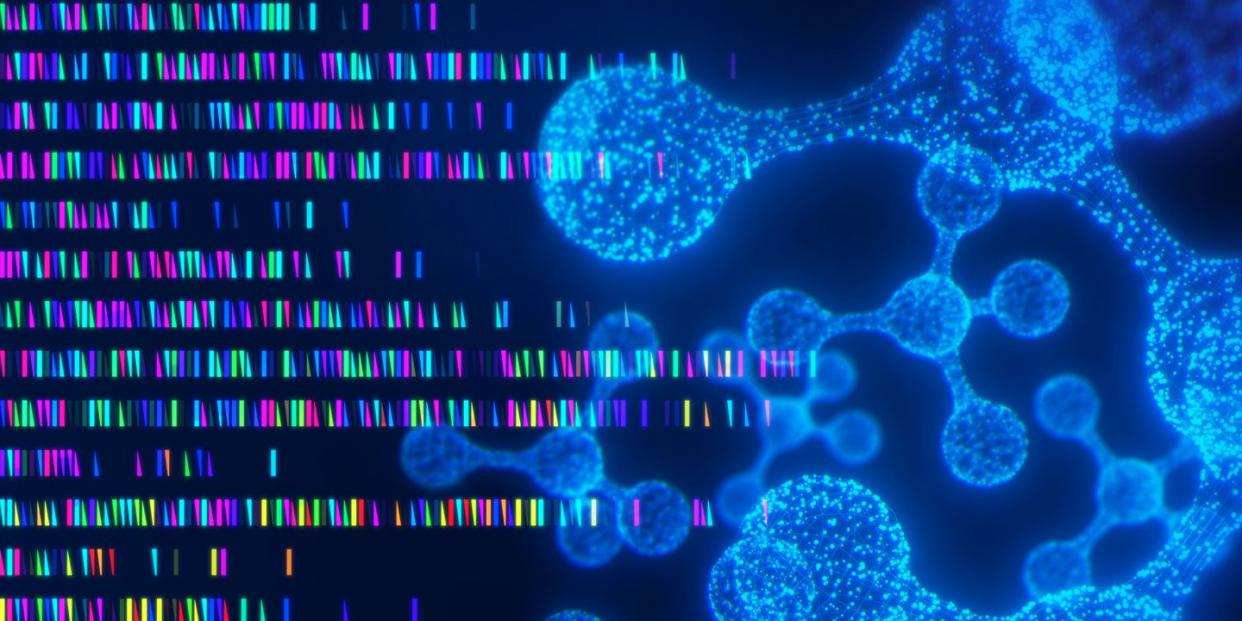Scientists Just Made a Massive Change to the Human Genome: The ‘Pangenome’

"Hearst Magazines and Yahoo may earn commission or revenue on some items through these links."
Scientists just announced that they have sequenced the genomes of 47 people and combined them into a “pangenome.”
This genome conglomeration fixed many of the problems with the original human genome sequence by broadening the scope of the genomic data set present.
The goal was to include genomes from across racial and ethnic backgrounds, building as complex a picture of human genetics as possible for future study.
Two decades ago, the Human Genome Project completed their mission—sequence the first full human genome. Map out all of the genes we can, and get the full set ready for use in learning more about how humans work than we ever could have imagined.
The project is still widely understood to be one of the most pivotal in the history of biology. But despite its momentous nature, it was limited. Most of that first human genome was built from the genetic code of one man, and you can simply only extract so much information from a sample set of one. Plus, there were gaps in the original genome, which weren’t completely filled until just last year.
So, researchers have been diligently working to expand this touchstone reference of human genomics, and today, a group of those scientists has made a huge jump forward. Through a series of published papers, the team announced that they have now synthesized almost-complete genomes from 47 individuals across a large range of racial and ethnic backgrounds.
They call it the “pangenome.”
“This complex genomic collection represents significantly more accurate human genetic diversity than has ever been captured before,” Erich Jarvis, one of the primary researchers on the project, said in a press release. “With a greater breadth and depth of genetic data at their disposal, and greater quality of genome assemblies, researchers can refine their understanding of the link between genes and disease traits, and accelerate clinical research.”
Having an understanding of the human genome built on a diverse set of information is critical if you want to understand humanity as a whole. There are genes and conditions in some racial and ethnic groups that never appear in others, and would never be able to be explored if they weren’t added to the genome. There are also genetic differences between male and female humans, which were not taken into account in the original genome and are in the pangenome.
There are also a few genome categories left out. Some cultures, specifically those of Native American and Aboriginal decent, have been reticent to relinquish their genetic material. Historically, many marginalized communities have had medical information taken from them without consent and, understandably, are not jumping at the chance to give up more now. According to an article in the New York Times, the team working on the pangenome is working with some of these groups to set up ethical guidelines around how their genetic information can, and can’t, be used. But it may be a while before some communities see themselves represented in the pangenome—if they ever do.
Still, statistically, this pangenome is a massive step forward. The new sequence shows off over 120 million never-before-seen genetic base pairs, about 90 million of which come from impactful genetic differences called structural variants. In the news release, Jarvis said that structural variants “can have dramatic effects on trait differences, disease, and gene function. With so many new ones identified, there’s going to be a lot of new discoveries that weren’t possible before.”
It’s probably going to take some time before we can access those discoveries, though. Increasing your data set by 47 times is incredibly helpful, but it also makes things more confusing to parse. The pangenome is more like a map than a GPS route, with a whole bunch of different combinations of traits you can make to get to your diagnostic destination. Figuring out how to make sure that the scientists who want to make use of this biological marvel can actually understand it is going to be a whole new, complicated, and challenging task. We have the map—now we’re developing the key.
Once that key is developed, we’re going to see a whole new wave of genetic investigation. And as the whole project gets even bigger—the team wants to have synthesized genomes from at least 350 people by the middle of next year—we will certainly no longer be lacking in the data department. With hope of being able to probe more genetic traits and maladies than ever before, hopefully, that information converts to new discoveries in short order.
You Might Also Like

